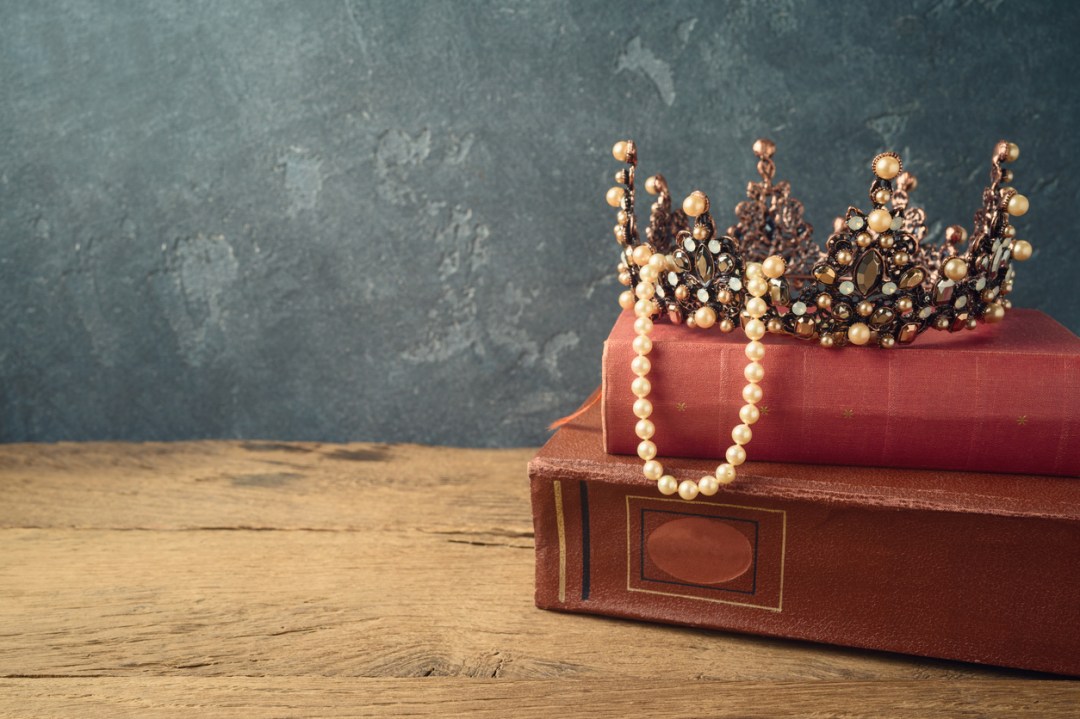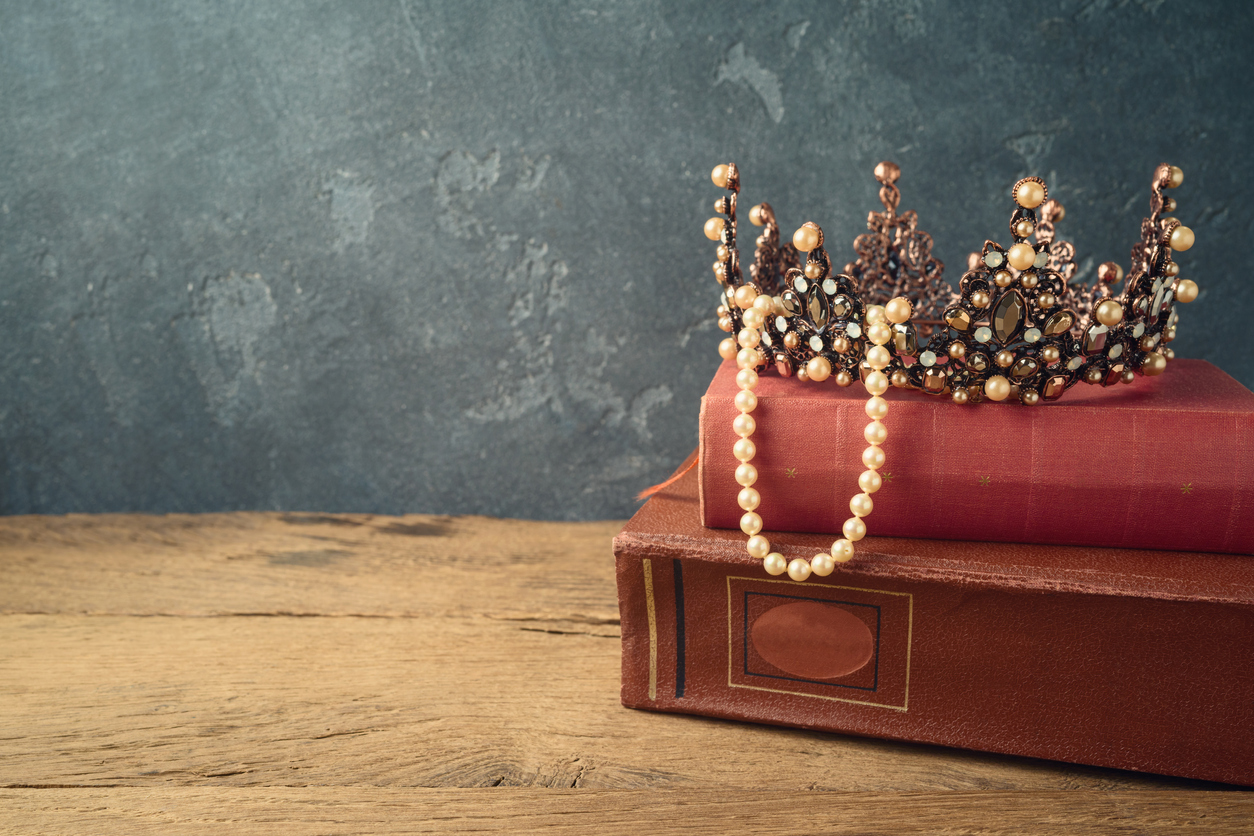‘In her big, white dress the Queen looks like a balloon that’s about to float up to the roof of Westminster Abbey and bob about up there amongst the gilded arches and roof bosses. To prevent this happening people keep weighing her down with cloaks and robes, orbs and spectres, until she’s so heavy that bishops and archbishops have to help propel her around.’
This is the coronation of Elizabeth II in 1953 as described by one-year-old Ruby Lennox in Kate Atkinson’s Behind the Scenes at the Museum. These observations might seem preternaturally advanced from a narrator not yet old enough to walk and talk, but that is consistent for this witty novel. It opens with Ruby being fully aware of her own conception: ‘I exist! I am conceived to the chimes of midnight on the clock on the mantelpiece…’ She goes on to describe her parents and their lives together while she is still in her mother’s womb. This was Atkinson’s first novel and won her the Whitbread Book of the Year prize in 1995. It’s a humorous and moving read, made all the more brilliant by the passages on the Queen’s coronation.
Another humorous novel that explores the Queen’s coronation is the aptly named Coronation by Paul Gallico (who also wrote the book Mrs Harris Goes To Paris, which was adapted into a film last year). Published in 1962, Coronation tells the story of the Clagg family, who are so desperate to feel a part of the coronation day that they have surrendered their much-anticipated seaside holiday in favour of going to London. Eleven-year-old Johnny and his younger sister Gwendoline jump on board the Coronation Special at Sheffield to arrive at St Pancras at 6 a.m. on the big day. They are accompanied by their mother, Violet, their father, Will, and their ‘nagging’ granny, who would rather have gone to Morecambe for her annual break. Gwendoline, however, is in a particularly excitable mood as she absolutely adores the Queen (although not as much as her father does – Will has taken a liking to the young Princess Elizabeth). Each family member has their own expectations about the coronation, and even the sight of their tickets increases their jubilant mood. But will it be as wonderful as they anticipate? Gallico’s short and enjoyable read will supply the colourful answer.
‘In her big, white dress the Queen looks like a balloon that’s about to float up to the roof of Westminster Abbey and bob about up there amongst the gilded arches and roof bosses’
Hilary Mantel’s Wolf Hall focuses on the rise of Thomas Cromwell and how he, the son of a blacksmith, came to be the second most powerful man in England. One of the richest chapters in the Booker prize-winning novel focuses on Anne Boleyn’s coronation, at a time when London is described as having so many fountains flowing with wine ‘that it’s hard to find one flowing with water’. The detail of Anne’s coronation is vivid and microscopic: she is ‘mantled in purple velvet, edged in ermine’. In the novel, the coronation is a four-day affair, timed to precision and brilliantly paced, almost written in the style of a journalist’s commentary: King Henry watches the coronation ‘from a box screened by a lattice, sequestered in the painted stonework’. Once Boleyn has been anointed, she withdraws, ‘incense blowing around her’. The book is a celebration not only of Mantel’s exquisite writing but also of the perennially fascinating Tudor period in history.
On screen, meanwhile, the coronation of 1953 forms the opening scene of the 1980 film adaption of Agatha Christie’s The Mirror Crack’d, based on her 1962 novel The Mirror Crack’d from Side to Side. Angela Lansbury stars as Miss Marple who has a mystery to solve in her hometown of St Mary Mead, where the residents are celebrating the coronation with a village fete on the green. It is a picturesque scene with raffles, lemonade stands and a band playing in the background. That is, until Elizabeth Taylor arrives. She plays Hollywood star Marina Rudd whose latest film causes a stir in the peaceful village. When she is approached by an ardent fan at tea, she offers the fan her drink. Shortly after, the fan is found murdered. Enter Miss Marple to solve the case.
Also in film, the 2010 historical drama The King’s Speech explores the working relationship between Prince Albert (before he became King George VI) and his Australian speech therapist Lionel Logue, hired to help with Albert’s stammer. Prince Albert (played by Colin Firth) approaches his coronation with immense trepidation as he is concerned about stepping into his brother King Edward VIII’s role following his abdication. One of the most moving and dramatic scenes in the film takes place in Westminster Abbey (filmed at Ely Cathedral) just ahead of the coronation. While Lionel (Geoffrey Rush) is running through Prince Albert’s lines with him, the prince lashes out at Lionel before Lionel reveals his own vulnerabilities. In the following scene, the royal family watches the Pathé newsreel of the coronation while commenting on the ceremony. The film was followed by a non-fiction, biographical book telling the story of Lionel Logue and King George VI – The King’s Speech: How One Man Saved the British Monarchy by Peter Conradi and Mark Logue.
In comedic contrast, one disastrous and hilarious coronation broadcast takes place in the 2003 family film Johnny English. Rowan Atkinson embodies the role of the M17 secret agent Johnny English who is tasked with saving the UK after super-villain Pascal Sauvage (John Malkovich) blackmails Queen Elizabeth II into signing a formal abdication letter which hands the throne over to him. The coronation of Sauvage is interrupted by English – but English is soon thwarted when a video of him miming to an Abba song is shared with the world, instead of the planned video showing Sauvage’s evil plans for the UK’s future. Let’s hope things will all go a bit more smoothly for King Charles III.







Comments